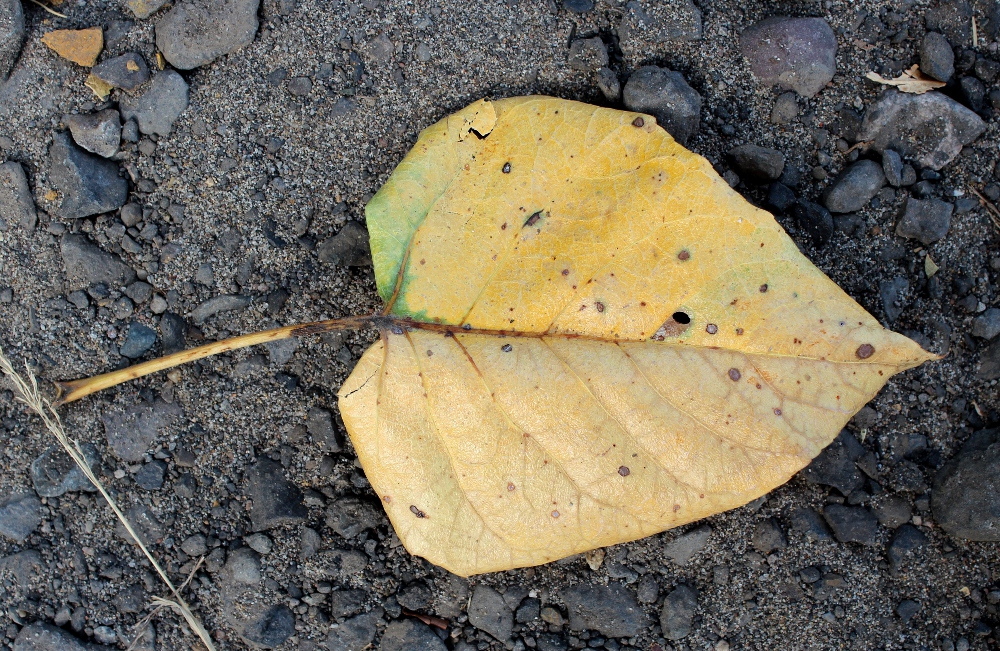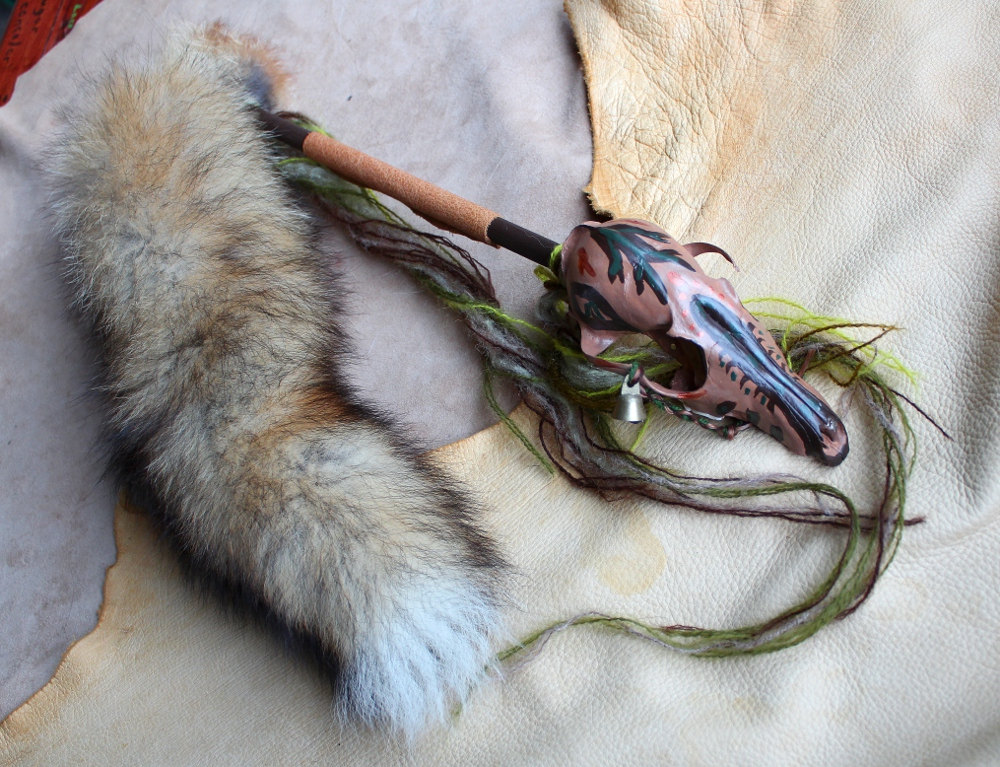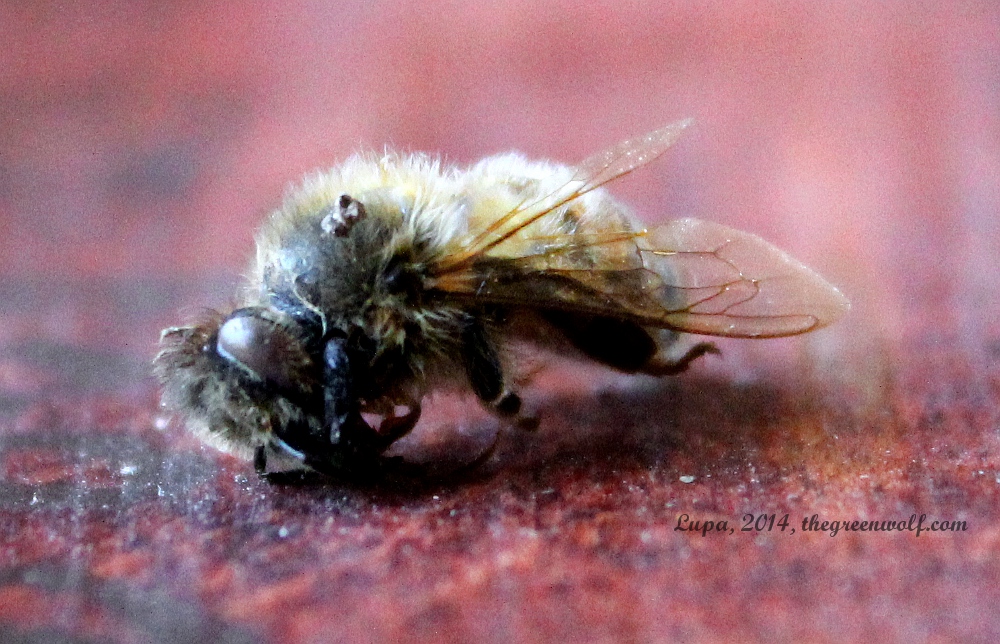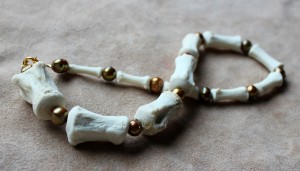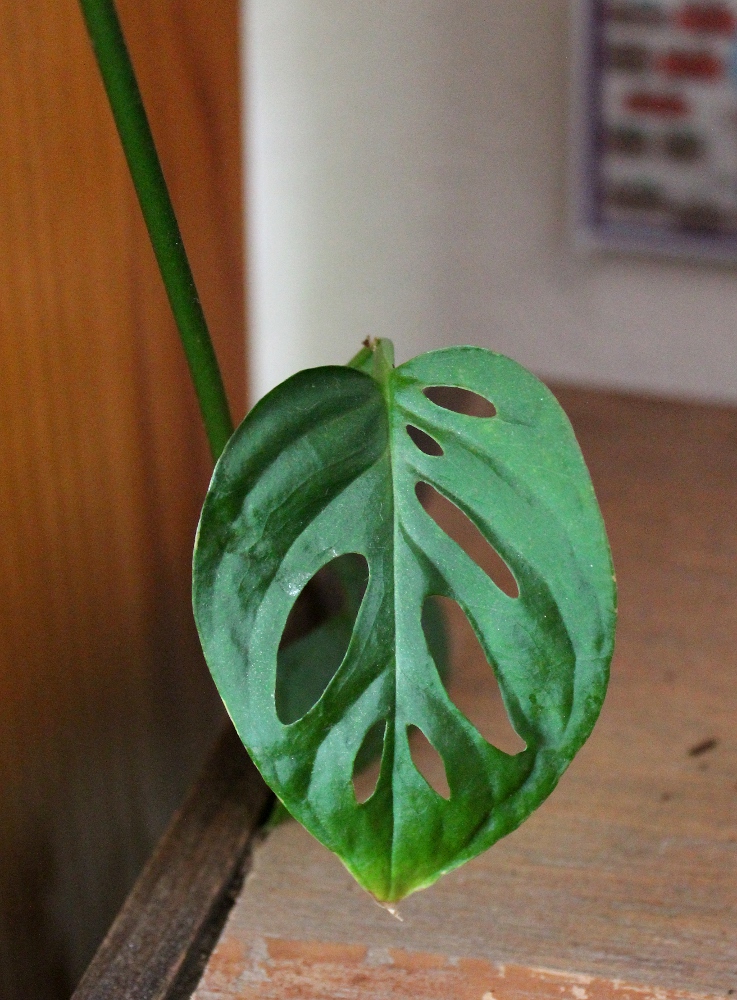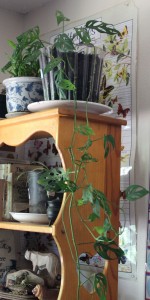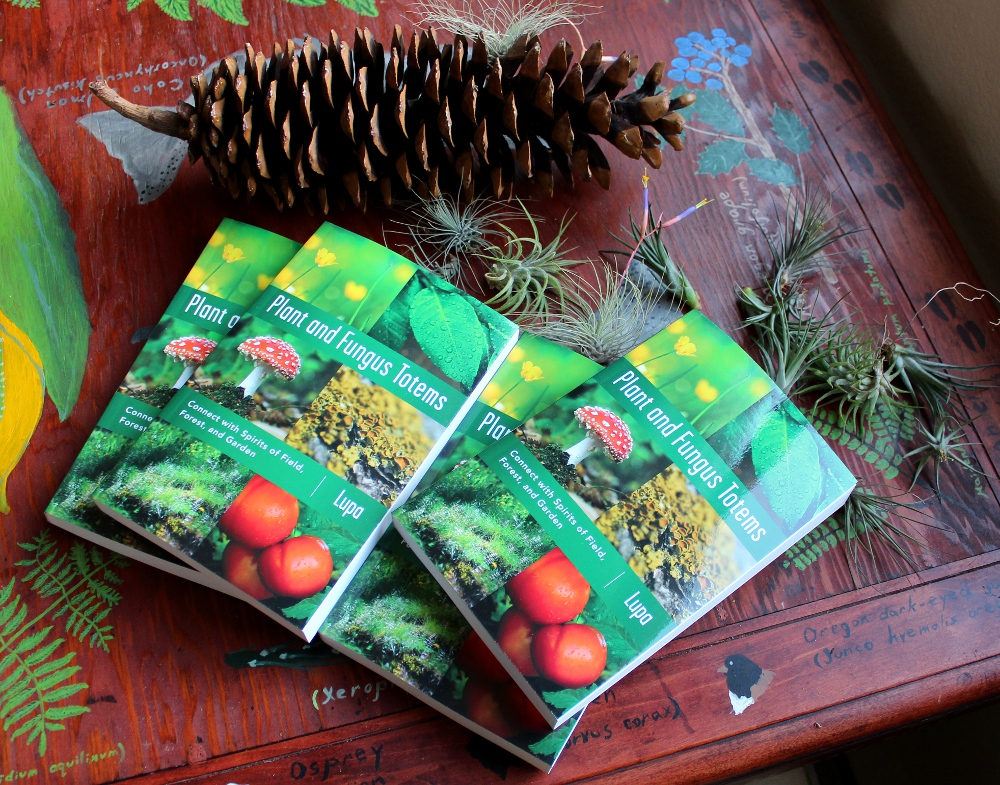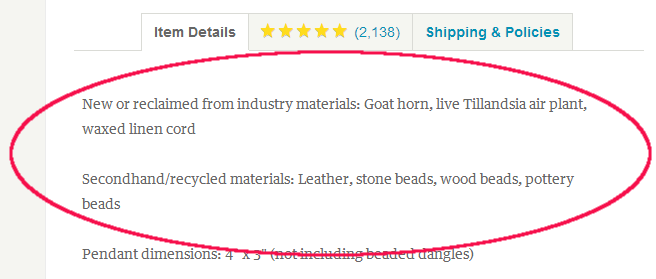Hey, all! By request I’ve added another level of patronage over at my Patreon! Some of my $15 art Patrons requested an intermediate level between that and the deluxe $60 level. So there’s now a $35 level, which allows me to make something extra-spiffy and get it shipped to you each month. Head to https://www.patreon.com/lupagreenwolf to sign up for the patronage package of your choice, whether that’s books or art or curiosities, or simply the opportunity to get sneak peeks of my works in progress!
Tag Archives: Lupa
So Here’s What I Think of Patreon Seven Months In
I’ve had several people ask me how Patreon’s been working out for me, so I decided I’d just write out a post for general consumption. I started my account back in July 2014, and as of this writing I have 35 Patrons and a total of $531 in monthly pledges, which is pretty damned good, all told. Overall it’s been a worthwhile effort, but here’s a more detailed breakdown.
Benefits:
–It’s a fun way to connect with people who like my work and treat them to exclusive stuff.
I love connecting with fans of my work. If I can create something that makes someone else happy, then I’ve done a good job. Patreon is essentially a regular feed of my writing and art, both online and via snail mail. Patreon offers two different ways to get paid for your work, either a pledge per individual project or a flat pledge per month. I am a very frequent poster; in seven months I’ve posted almost 250 projects, or about 35/month. A lot of these are work in progress shots that are only visible to my Patrons, though the completed works are there, too. (I use the “activity” tab for updates and check-ins with my Patrons.)
So this means that every week my Patrons get an eclectic mix of work in progress shots, final projects, sneak peeks of blog posts that haven’t gone live, and whatever other fun things I decide to post. And then once a month I get to send out the monthly rewards. For those pledging $5 or more, that’s the profile I post of a different animal, plant or fungus totem each month. Starting at $15, I start mailing out actual physical goodies, ranging from art to books to the makings of a cabinet of curiosities. I really get a kick out of mailing these little “care packages” to folks, and I hope they look forward to them at least as much as I look forward to sending them.
–It’s a fairly steady amount of money each month.
The first of the month is always a challenge financially. Not only is rent due, but so are several other decent-sized bills. So it’s a real boon to get an extra chunk of change in the bank account right about then. Patreon usually starts charging Patrons the first of the month, though there have been one or two times where they were delayed for a couple of days. However, they’ve gotten faster about processing since I signed up, and the money generally shows up in my account within 24-48 hours after I initiate a transfer.
–It’s a great way to try out crowdfunding without a big risk.
If you’re thinking about crowdfunding but you’re unsure whether you’d get a project fully funded, Patreon is a good training ground. I’m planning an IndieGoGo (or similar) campaign this April to help fund the Tarot of Bones; it’ll be my first time-limited, single-project crowdfunding effort. Patreon has been a good way to gauge interest in my work, and to help me brush up on my promotional skills, and I feel more prepared for the spring fundraiser than I probably would have without Patreon.
Drawbacks:
–It’s not a 100% predictable amount of income.
People can sign up as your Patron at any time, but they can also end their Patronage at any time, too. And while Patreon emails you whenever someone signs up or changes the amount of their pledge, they don’t let you know when someone drops off, so it can be a little disappointing to go to your profile and see your pledge level has dropped unexpectedly. I have had former Patrons message me when they dropped their pledge to let me know why, which is always appreciated. But it’s best to see Patreon as a supplement unless you’re one of those rare folks who has hundreds of Patrons giving thousands of dollars a month.
–You don’t get to keep all the money that’s pledged to you.
Patreon takes a BIG chunk of money out. From their FAQ:
Patreon takes 5% and the creators cover the credit card transaction fees which are generally 4% across the site. Also remember that some pledges will fail due to declined credit cards. We’re happy if a creator sees around $0.90 of every dollar!
As as an example, of that $531 in pledges that I had at the beginning of February, after Patreon’s fees and two declined cards I received $463.88. It’s still a nice bit of money and I’m grateful for it, but I feel it’s important for readers to know that what it says I get per month on my profile won’t necessarily be what ends up in my bank account.
Additionally, I spend a fair bit of each month’s pledges in shipping costs. Granted, they’re factored into the pledges, but I routinely spend between $3 and $9 to ship an item to a Patron. This month my shipping charges were well over $100 because I promised if I hit $500/month in pledges I’d send all the Patrons who helped me achieve that goal a little natural history specimen as a gift, and so I had to send out over 30 packages, including a few international ones. Had this been a normal month I would have sent out seventeen packages, but the shipping would still have been in the $60 range.
–It’s a LOT of work.
When I started my Patreon account in July, I didn’t automatically have $500 worth of pledges flood in. I did hit the $100/month milestone within the first few days, which honestly blew my mind. And in January I managed to go from $401 to $531 in a matter of something like two days because I did a bunch of “Woohoo! Help me hit $500!” social media posts.
But in between $100 and $401 was a ton of work. As a self-employed creative person I have had to perfect the art of self-promotion–or at least work toward perfecting it. I mention it multiple times a week on Facebook, Tumblr and elsewhere. I talk it up when I vend in person. I let my online customers know about it. In short, I do my damnedest to let everyone know that “Hey! I have a Patreon and you can get all kinds of cool stuff that no one else gets if you sign up!”
This means you have to be absolutely tireless in your promotion to make it work. I mean, if you already have a platform of tens of thousands of people ready to throw money at you then your Patreon should fill up quickly. But for the rest of us, it’s a hell of a slog, and I am absolutely grateful for every one of my Patrons, past and present. (And would-be–I know there are folks out there who’d love to pledge except they can’t afford even $1/month right now. Totally understandable.)
Platform-specific Complaints:
–No way to browse individual artists (“Creators”) as opposed to projects.
If you go to Patreon’s homepage, there are only a few ways to find Creators. Below the initial “Hey, we’re Patreon!” video you can see five featured projects. And if you click on “Featured” on the bar at the top of the homepage you get a couple dozen more features projects. That “Featured” page also has a left menu of categories, but again it it only takes you to individual projects, not Creators. The only way you can find individual Creators who take pledges on a monthly basis rather than a project-by-project basis is if you search for their name or keywords in the search bar at the top of the site, so it’s well-nigh impossible to be discovered by a potential Patron who didn’t already know who you are.
I’ve contacted Patreon about this, and they claim they’re working on a solution, but I’ll believe it when I see it. As it is, I have to rely a lot more on my own promotion and the word of mouth of others than Creators who pledge per project.
–Back-end navigation is a little counterintuitive and disorganized.
You would think that if I wanted to edit my profile (which shows what I’m offering the world) AND my Patreon Manager (which tells me who’s pledging what) I would go to one central location, right? Nope. To get to the former there’s a dropdown menu accessible from the upper right-hand corner of the screen, marked by my logo. To access the latter, I have to click on “Home” (not “Patreon”), and then click on the little button that says “Patron Manager”.
And it just gets more unwieldy from there. Each month’s record of Patrons has its own individual page, meaning a lot of clicking through and having to compare each month from its own tab. I’m sure they’ll keep upgrading it, but for now it’s kind of a pain in the ass to navigate.
Conclusion:
Gripes aside, I see Patreon as a way to get guaranteed custom work each month. I have a group of people that I know I’ll be making art for, and I have people I know I’ll be sending books to, and I have folks who will be enjoying little exclusive treats in my feed throughout the month. I’m quite used to having to work hard promoting my stuff, so this is just one more thing for me to offer.
Speaking of that–if you want to be my Patron, here’s my account again! You can become my Patron for as little as $1/month, and help me keep writing posts like this one. And thank you!
The Artist’s Equinox
This morning settled upon me gently; drowsy eyes opened to cloud-shrouded light through the cracks in the blinds. The past few mornings have been tight-laced with urgency, as all event days start. We have to get to the venue; we have to make sure the booth is open; wait, did I remember to pack the cash box, and is there enough change for the day? And so forth. The day’s activities variously include making stock to replace what’s sold, interacting with and helping my customers (sometimes large groups filling the entire booth), steeling myself against ninety-degree heat and direct sun or an air conditioner turned down to chilly levels, and usually tons of music and background noise through which my consciousness must filter only the most important information. Wait, did I remember to eat? This can go on for eight to twelve hours straight. By the time I fall into bed at the end of the day–whether my own, or a hotel’s, or an air mattress in my tent–all I want to do is sleep for fifteen hours, even though I know I need to be awake in eight or fewer.
I do love vending; I love getting to see people, and talk to folks I normally only run into at events, and of course it’s nice to sell my art and books as well. But I am, at heart, an introvert, and while I can socialize quite well and enjoy it, too, it drains me after a while. Plus there’s all the energy that goes into preparing for, executing, and tearing down the booth at an event, and then arriving home and realizing just how much I still have to do, all those things that got shoved to the side for this one big burst of effort that has eaten up my days. I’ve had something scheduled every single weekend since Labor Day, and while there’s been a lot of fun involved and it’s been worth it financially, today is the day I’ve been waiting for the most.
Because today is the first day where I don’t have a huge event waiting at the end of the weekend. I have a book signing at the Pacific Northwest Booksellers Association trade show this Saturday, but that’s it. A quick boomerang trip, wake up at home and sleep at home. And in front of me stretches a month of few commitments. Plenty of things on the to-do list, but plenty of freedom in which to get them done. There’s no schedule but that which I put myself to, and it is a beautiful thing. It’s easier to take one thing at a time now, focus only on what’s right in front of me. Like the trees divesting themselves of leaves, I, too, shed extra weight.
So I’ll be heading out to my community garden plot to pick the last of the tomatoes and start preparing it for the cold months. There will be time to start cleaning the apartment, left too fallow during the busy festival season. I have packages to mail, and custom work to create, and articles to write. My Etsy shop needs some nifty new things, and there are book ideas floating around, too. The next few months are full of potential and ideas and creative juices bubbling forth–and I’ll sleep when I want to, too. And, best of all, there’s so much hiking to be done–and I’ve already reserved a yurt on the coast for a personal writing retreat in October as well. The wilderness beckons, and I yearn to run to it.
Autumn is here, and as the land around me prepares for a quieter time, I also come home to my den, only to venture out so often, and glad to be in the comforts of home.
Quick Patreon Update: New Goodies, New Goal
Hey, folks! I’m going AFK for a few days later this week for a much-postponed backpacking trip, but before I leave I wanted to give you a quick update on my Patreon account! It’s been live for a little over a month, and I already have almost $300 in monthly patronage—thank you to everyone who’s become a patron, spread the word, and otherwise been supportive!
I’ve since added more patron rewards, including one for a monthly totem card reading, and more cabinet of curiosities options. I’ve gotten great feedback from my patrons so far about the goodies I’ve been sending them. And if we can get my monthly patronage up to $500, I will send every single one of my patrons a nifty natural history specimen, anywhere in the world.
Want to help me reach that goal? Head over to http://www.patreon.com/lupagreenwolf to become my patron today 🙂
Purification Ritual For Hides, Bones and Other Animal Remains
My artwork and other practices with hides, bones and other animal remains have always been intensely spiritual. I didn’t like seeing them displayed as mere trophies or status symbols, and so set out to remake them as sacred creations and beloved personal artifacts, guides in costumed shapeshifting and curiosities for consideration. I wanted them to be revered, not merely possessed.
There are a lot of factors outside of my control in this. I can’t control who buys a particular item (other than turning away the occasional rude customer) or what they do with something I made once they have it. I’ve just had to learn to let go and let gods in that regard. But I can do my best to seek out my target audience and present my work in a way that will appeal to them, and keep working my intent into everything I create. And I add a bit of a ritual to it, too, whether you want to believe it changes things on a distinctly spiritual level, or simply helps me stay focused on my task.
I realized recently that while I reference the ritual I do quite a bit, I haven’t actually written about it much. So I figured now would be as good a time as any to share it with you in detail. You’re welcome to try it out for yourself, modify it as needed, but please do give credit when sharing.
There are three parts of the ritual: the meditation, the purification, and the offering.
The meditation is the part that takes the longest. I’ll sit with each piece that I’ve created, and meditate with the spirits of the animals whose remains are incorporated into the art. I have a conversation with them, and ask each of them to show me what they’d like me to know about their lives and deaths. Sometimes I get a vivid, play-by-play of their last moments; other times I get highlights of their lives, especially when they were young (even other animals like to reminisce about childhood). I’ve often gotten some of this information already; as I create the art I’m having an ongoing conversation with them about what I’m creating and what they’d like me to include, and it’s a good opportunity to chat with them about other things as well.
The purification involves a physical smudging of the completed artwork. I used to use sagebrush, but these days I tend more toward cedar or sweetgrass as I like the aroma better. I generally only use a tiny bit at one time; rather than burning an entire sage smudge stick, I’d just pull out one lone leaf and light it. Part of this is to keep from aggravating my asthma, but it’s also so I’m using fewer resources. One leaf purifies as well as thirty in my experience, even if it takes just a touch longer to smudge the entire piece. It’s really an issue of quality over quantity. Other forms of purification can work, too, though I recommend against water-based ones since water can hurt certain hides and other remains. I also say a prayer over each piece at this time, asking that they will go to someone who will love them and cherish them for who and what they are, and thanking them for letting me work with them in the first place.
The offering is the part that’s changed the most over the years. When I first got started, I would offer small drilled stones and shells to the totems of the animals whose remains I used. When I had enough to fill a small leather pouch dedicated to that totem, I would make the stones into a necklace, and then give it to someone who worked with that totem. Over time I became less enamored of this. What was I going to offer to the totems of the stones I made as offerings to the animals? After all, they’re a part of nature, too, not just objects to be given and taken. So I instead diverted the money I would have spent on the stones and shells toward donations to nonprofit groups, and increased my volunteer time to compensate as well.
No purification ritual goes exactly the same way as another. Sometimes the meditation is brief, other times it’s looooong. Occasionally I get a spirit making a special request for an offering or other gesture. That’s why I don’t have this all written out in one big “First say this, then do this” format. It’s more a set of guidelines than holy writ. The point is to remind myself that I am working with skin spirits and sacred remains, and that what I do is meant to honor.
Note: If you enjoyed this post, please consider bringing home a copy of my book Skin Spirits: The Spiritual and Magical Uses of Animal Parts, which details my years of spiritual work with hides, bones and other animal remains, along with step by step instructions on how to make assorted ritual tools with them.
Her Work Is At An End
This morning I went to my garden to water and weed, just as I do most other summer mornings. It’s early August, and the hot, sunny weather Portland has been getting the past few weeks has caused both my vegetables and the weeds to engage in furious growth. While I hate having left the weeds to get as big as they have while I’ve been gone for festivals, I do have to admit it’s more satisfying to yank up one weed and clear a six inch wide patch of earth than to scrape dozens of tiny weedlings with my trowel and hope their roots don’t regenerate quickly. I’ve managed to make enough space to transplant crowded parsnip and beet seedlings, and these appreciate the cool water that soaks into their new soil.
The other evening when I visited my garden with a friend, we found a dead honey bee still clinging to a calendula bloom gone to seed, entangled in the drying, withered petals. While dead-heading the flowers today, I noticed the little deceased was still there in spite of the human-brought rain from the hose. A few specks of soil clung to her fur, kicked up from watering and weeding. Her wings, slightly torn, stuck out at odd angles. I broke off the flower she lay upon; she looked almost as though she were merely taking a nap, one front leg tucked under her head.
There was no sign of trauma or injury. Perhaps she was a casualty of neonicotinoid pesticides outside of the community garden’s organic boundaries. Or she may have been too old, exhausted on her last flight, a spring hatchling now matured far into summer. She might have just come from her hive after being relieved of a burden of pollen and honey.
Had she died at home, there’d be no bedside elegy; bees are much too efficient for that. Her corpse would have been dragged from where she fell, then dropped unceremoniously into a refuse pile outside the hive. Here, nestled on the edge of a fertile calendula blossom, she was afforded a bit more peace, a few days to lie in repose. Probably no one but I and my friend took note of her passing; certainly none of her hive-sisters would have noticed she was missing. There is no room in the hive for sentimentality when life is so brief to begin with.
I’ve brought her home with me. For now she’ll rest on my work bench, off to the side. I have ideas on how to honor her with my funerary art, but for the moment she’ll lie in state, a reminder of so many of the reasons why I do what I do–and a warning against working too hard lest I, too, only find peace when my own work is at an end.
A Very Special Announcement For My Readers, Fans, and the Like
I have been making my art since 1998. My first article was published in Sagewoman in 2004. 2006 saw the publication of my first book and the creation of my first serious blog. Over the years I’ve explored many different avenues for getting my work out there, from writing for countless publications in pixels and paper, to expanding my vending setup to make it easier to meet you all in person, to stepping just a teensy bit into the gallery scene, among other ventures both successful and ill-conceived.
All along the way I’ve had the support of so many people. You’ve cheered me on, given me constructive feedback, shared your own experiences and questions with me, and introduced others to my art and writing. And, certainly not of the least importance, you’ve supported my work financially, buying my art and books, attending paid workshops, purchasing totem readings, and otherwise compensating me for my time and effort and creations. In short, you’ve given me a part of yourselves so that I can continue to have a roof over my head (and more art supplies under that roof!) All of that tells me that you like my work and want to keep seeing me create things.
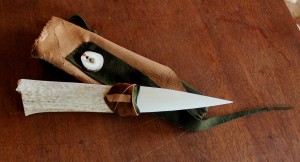 Your support has helped me become more productive; I’ve been completely self-employed since 2011, which, of course, means that I get to art and write full-time. (More than full-time, really–eighty hour weeks are not uncommon here.) One of the challenges of this otherwise awesome situation is that there’s no steady paycheck. I could have a week where I pull in a four figure sum, and then the next week I make just enough to get some quarters for the laundry. While it’s a challenge I’m up to, I want to make this a more sustainable venture.
Your support has helped me become more productive; I’ve been completely self-employed since 2011, which, of course, means that I get to art and write full-time. (More than full-time, really–eighty hour weeks are not uncommon here.) One of the challenges of this otherwise awesome situation is that there’s no steady paycheck. I could have a week where I pull in a four figure sum, and then the next week I make just enough to get some quarters for the laundry. While it’s a challenge I’m up to, I want to make this a more sustainable venture.
Which is why I’d like to introduce you to my Patreon profile. Patreon is a platform that allows artists to share content (including exclusive works) with modern-day artistic patrons who make a monthly financial contribution to the artist’s efforts. You don’t have to give a whole lot, either. For just one dollar a month, you get access to patron-only content–sneak peeks of blog posts days before they go public, work in progress pictures of art, and other things that patrons alone will be the first–or only–to see. And there are other monthly perks depending on level of patronage, including but not limited to:
–Monthly profiles of animal, plant, fungus and other totems, viewable only to my patrons and not to be posted to this blog
–A “book of the month club” where I’ll send you one of my currently available books every month until you have the entire set
–Several art subscription opportunities, where each month I send you something I made, from jewelry to ritual tools to elaborate costumes
–Three different cabinet of curiosities subscriptions, where each month I send you a selection of curiosities I’ve made or curated, and at the end of six months you have a complete collection, including a booklet that I’ve written to explain the theme of the collection and what makes each piece in it awesome
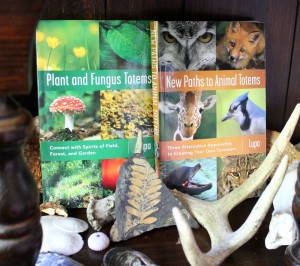 Plus there are even MORE perks for you if the total amount given by all my current patrons reaches certain milestones. The first time it hits $100 per month, every patron gets a hand-drawn thank you card from me. On the other hand, if I somehow accumulate enough patrons giving enough money that I’m making $2,500 per month, I’m going to write you a full-length book. (No, seriously. I will write a book, minimum 45,000 words, on some topic of nature spirituality, and self-publish it in both ebook and paperback format, and my patrons will get a free copy, and no one else will have access to it for at least a year. I would LOVE to write you a book, just sayin’.)
Plus there are even MORE perks for you if the total amount given by all my current patrons reaches certain milestones. The first time it hits $100 per month, every patron gets a hand-drawn thank you card from me. On the other hand, if I somehow accumulate enough patrons giving enough money that I’m making $2,500 per month, I’m going to write you a full-length book. (No, seriously. I will write a book, minimum 45,000 words, on some topic of nature spirituality, and self-publish it in both ebook and paperback format, and my patrons will get a free copy, and no one else will have access to it for at least a year. I would LOVE to write you a book, just sayin’.)
What do I get out of this? Not just money. I get stability and more of an ability to budget from month to month. And that’s a huge benefit. Knowing that I am guaranteed to get a certain amount of money coming in from my patrons, regardless of whatever other sales and income I get, helps reduce the stress of chasing after dollars.
Moreover, it tells me that those who choose to become my patrons really want to see me keep making creative things. I love making art and writing for myself, don’t get me wrong, but it takes other people loving my art and writing enough to compensate me for it that allows me to keep creating at the rate that I do. And at the end of the day, it feels really, really good that enough people like what I do to enable me to be a full-time creative sort. It’s a great motivator to keep making cool things happen.
So. Sound like a good opportunity to you, too? Then head on over to my Patreon profile, and see what patronage level works best for you!
(And thank you. Again and again and again.)
Monstera Obliqua/Swiss Cheese Vine as Plant Totem
Last summer, when I was working a day job in addition to keeping the Green Wolf as a business going (yes, it was a busy time) I was fortunate enough to be able to walk to work every day. Along my walk there was an office building where someone had some house plants they decided they no longer wanted to care for. So within my first week of work, I had adopted several new plants from the curb. All of them were dehydrated and in too-small containers, and most of them I wasn’t even sure what they were.
One in particular stood out to me. It looked something like a philodendron, but with odd natural holes in the leaves. With a little research, I discovered I had a specimen of Monstera obliqua, the Swiss cheese vine. It’s the little cousin of the better-known Swiss cheese plant, Monstera deliciosa; its proper Latin name is actually Monstera adansonii, but both I and the totem rather prefer Monstera obliqua between the two of us. The plant does grow like a philodendron, and like its lookalike it can be propagated with cuttings.
There weren’t going to be any cuttings off this sad little vine, though, at least not for a while. She had one single vine, barely six inches long, with just a few shriveled leaves on it, and was still potted in its original nursery planter, a tiny plastic box-like thing about three inches cubed, with bone-dry soil. I gave the poor thing some water as soon as I got to the office, and then carried her home with me that evening for repotting. After that, it was a waiting game to see if she and her companions would pull through.
I am pleased to say that not only did they make it, but they flourished! The Monstera has been the most successful; a year later, that one little vine is now the better part of ten feet long, and there are others of varying lengths. (I think of her as my tropical Rapunzel, albeit an inedible one!) I recently repotted her again, and had the chance to have a long conversation with her totem, Monstera Obliqua.
First, the totem thanked me for caring for its offspring and rescuing it that day. Then it asked me about my experience caring for the plant for the past year. I talked about how fulfilling and exciting it was to see her thrive and grow, rebounding from poor care. I had enjoyed learning more about how to take care of her and my other house plants, especially since my experience had mostly been with temperate vegetables, not tropical vines! And I appreciated the beauty of this unusual plant, brightening first my office, and then my home when my temporary summer job ended.
Then Monstera Obliqua said “In the wild, my offspring must climb the taller trees in order to get enough sunlight to live. They have to climb off the forest floor to keep from being trampled and destroyed. There is nothing wrong with relying on those around you for help. My children do not harm the trees they climb; there is no competition, only opportunity. The tree can get what it needs regardless; the vine simply benefits from its strength.
“In the same way, this little vine has relied on your strength. She is not in her home tropics, but in a place of more varied temperatures, at the mercy of whoever brings her water and food and soil. You have offered her somewhere to grow and be, and attended to her needs. The only thing she might hope for is a little more space to stretch her vines along, letting her instinct to climb be realized. But you see how she flourishes; she appreciates you and makes the most of what you give her.
“Can you say the same of those who give to you?”
And that gave me reason to pause. For many years now I’ve ended my day with a thank you prayer for all those who have given of themselves to keep me alive and well in this world, and I try my best to show my gratitude to those who help me each and every day. Sometimes I have to struggle a bit; even the toughest experiences are still lessons to be learned and stories to be made, and I do my best to live with no regrets, only perspective. But every moment I breathe is a gift, and I thought of all the times when I was the vine climbing a tree, and all the times I was a tree with vines climbing me for support. It wasn’t competition, just everyone doing what they needed to to survive.
And now I look at my not-so-little Monstera vine with a little more meaning and a little more understanding of the complex ecosystems and webs I am a part of. There’s no shame in needing others, and there’s no arrogance in being strong. Not every vine has to be a strangler fig, killing its host over time, and not every person who draws on one’s resources is going to take too much. A healthy balance is a good thing to aspire to, and the totem Monstera Obliqua reminded me of that.
If you liked this post, please consider purchasing a copy of my newest book, Plant and Fungus Totems: Connecting With Spirits of Field, Forest and Garden. Your support is greatly appreciated!
Books, Blogs, and the Monterey Bay Aquarium
Lupa news round-up! Here’s what I’ve got for you dear readers:
–My newest book is out! Plant and Fungus Totems: Connect With Spirits of Field, Forest and Garden is a continuation of my spiritual explorations the past several years. In it I focus on what fungus and plant totems are and how they’re unique from their animal counterparts (and each other!), different ways of working with them, and how to give back to them and their ecosystems, among other topics of interest. As with all my books, this is no mere dictionary stuffed with page-fillers, but instead a versatile toolkit to apply to your practice. You can read more about it and buy a copy here.
–In a similar vein, I just today discovered that the shopping cart feature on my website has not been working since I switched it over in March. The back end showed that a few people tried to buy books, but I got absolutely no information other than a date and time, and no money was received here. If you were one of those people (or if you still want to order books from here instead of at my Etsy shop), I have reverted back to the old Buy Now buttons which, while not a pretty, are proven to be effective. My sincerest apologies for the inconvenience.
–If you’d like to sample even more of my writing for absolutely free, one of my co-writers at the now-defunct No Unsacred Place, Rua Lupa, has teamed up with me to offer you all a new blog at Patheos, Paths Through the Forests. We’ll be continuing our thoughts and conversations on nature, bioregionalism, spirituality, and more. While I’ll occasionally post a link round-up here, you can get more frequent updates on Twitter, Facebook, and Google Plus. Rua Lupa’s already posted there, and my first official post is due out Thursday of this week.
–Finally, thanks to sales at Faire in the Grove this past weekend, I was able to make a donation to the Monterey Bay Aquarium! They are a world leader in research on marine biology and ocean health, as well as the developers of the Seafood Watch pamphlet, website feature and phone app, which allow you to look up which seafood choices are sustainable, and which to avoid. Plus they always have an amazing array of sea creatures on display at the aquarium itself, well-cared-for and healthy, and accompanied by plenty of information. You can find out more about the Monterey Bay Aquarium and their work at www.montereybayaquarium.org/
New vs. Secondhand Materials in My Art
If you’ve visited my Etsy shop lately, you may have noticed that I’ve made some changes to how I describe the materials used in my works. In my continuing efforts to be more eco-friendly in my art, and to help prospective buyers make decisions that fit their personal ethics, I’ve divided the materials up into two categories:
New or reclaimed from industry materials: “New” describes supplies that I’ve either bought new from a shop or a commercial supplier, like certain jewelry findings, most acrylic paints, and artificial sinew and other thread. “Reclaimed from industry” is sort of the “pre-consumer waste” alternative–it includes scraps from commercial industries that I then reclaim myself or through a third party supplier. These are usually byproducts that the original industry can’t use, but which are kept out of the waste stream (read: the trash) through art and other means. A good example would be the tails and other scrap fur that are left over from garment manufacture.
Secondhand/recycled materials: Secondhand refers to materials that previously belonged to another private individual; this can range from hides and bones that were a part of a person’s private collection, to leather jackets, costume jewelry and other items from thrift stores, yard sales and the like. Recycled materials are things that I’ve otherwise repurposed; for example, handmade paper made from envelopes, unwanted junk mail, and other paper that I would have tossed into the recycling bin otherwise.
As both a mixed-media artist and an avid environmentalist, I feel very strongly that it’s my job to promote eco-friendly practices and materials. Over the years I’ve incorporated more and more green habits into both my art and my everyday life, and I want to encourage others to consider doing the same. By being more transparent and straightforward about where my supplies come from, I hope to inspire people to think more about where the items they’re buying come from, not just art, but in general. Look at the plastic and cardboard packaging that much of our food is wrapped in. You may see a label that says “Made with 75% post-consumer waste” on it, but have you ever really thought about what that means? For me, at least, it’s incentive to keep supporting companies that make use of recycled fibers and other materials, to be extra-careful about sorting out my recyclables, and to reduce my consumption in the first place.
And I want to do that with my art as well. My creations are intended to evoke honor and care for the environment, and by being more clear about the origin of my materials, I am not only offering up the information to others, but I’m also reminding myself of where the things I make things out of come from. As I spent the past couple of weeks updating each of over 300 listings in my shop, I became a lot more aware of the realistic proportions of new to secondhand materials I was working with. Sometimes I was surprised at how little secondhand stuff was in one piece; other times I’d find a piece that was entirely made of reclaimed materials. It’s not that I wasn’t conscious of my materials on some level before, but this exercise brought it into greater awareness. And it’ll keep happening each time I list new items and go through the process of describing the materials in detail.
Of course, just as the 75% post-consumer waste cardboard cracker box doesn’t tell you the whole story–the pollutants that are a result of even the most efficient recycling process, the energy used to make the box and fill it with stuff and truck it to the store–my brief descriptions aren’t the whole story, either. For example, I’m well aware that commercial tanning is a messy process with nasty byproducts, and that although acrylic paint is a much more eco-friendly product than oil paint, it’s not without toxins in its process, either (plus you can’t really clean the bottle well enough to recycle it). That’s part of why I’ve always maintained an open-door policy when it comes to questions about my materials and their sources. I’m happy to explain to the best of my knowledge where something comes from and what its impact is.
I still have a list of changes I want to make to my materials and my processes that are more in line with my environmental ethics. Some of them are out of reach right now because I don’t have the money or space, or because I haven’t had the time to experiment with greener alternatives (or I haven’t found one that fits my needs). But, like anyone, I do the best I can with what I have. I may still be renting from a fairly strict property management company and therefore can’t install solar panels, but my local electric company offers a 100% green energy plan with additional salmon habitat restoration, and I switched over to it a few years ago.
And I’ll keep knocking things off my “green list” as I go along. This shift in my materials descriptions is a small thing, but I hope it helps. Here’s an example of where you can find the materials information on each listing:
Please note that I did not include this on items in my Supplies/Vintage category, since for the most part those aren’t items I made myself. I also didn’t include it on the books I’ve written, since I didn’t make the physical books themselves, and it’s not on the custom work available because each custom piece may include a unique proportion of new to secondhand materials. That being said, you can find the new materials information on the majority of the items in my shop, and again you’re always welcome to ask me about sourcing.


